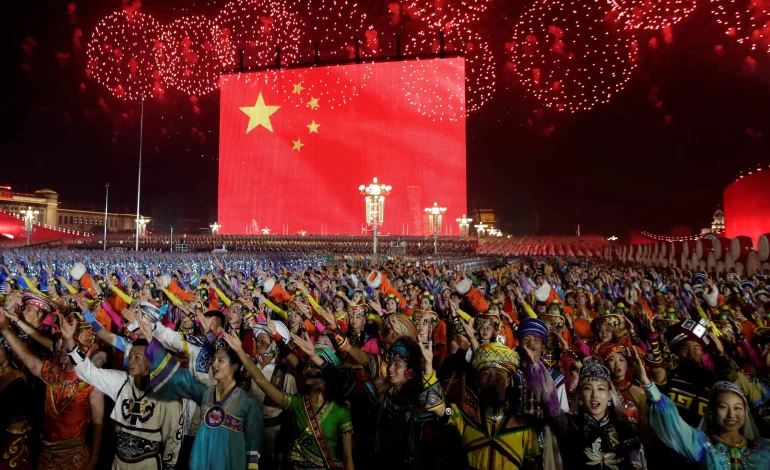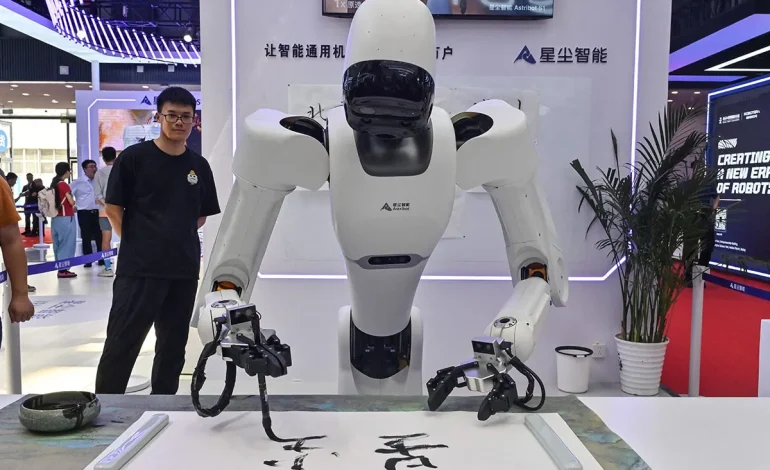National Day 2025: How China’s Tech And Economy Reflect 76 Years of the PRC

October 1, 2025, marks the 76th anniversary of the founding of the People’s Republic of China (PRC). Since 1949, China has transitioned from a predominantly agrarian economy to a global technological and economic powerhouse. Over seven decades, the nation has achieved remarkable growth in GDP, industrial output, infrastructure, and innovation capacity, positioning itself as a central actor in global markets and technology competition. This anniversary offers an opportunity to analyze China’s journey, highlighting key milestones in technology, economic development, and policy leadership, as well as assessing challenges and prospects for the post-2025 era.
Historical Economic and Technological Milestones
Following the PRC’s foundation, China prioritized industrialization and infrastructure development. The 1950s and 1960s witnessed large-scale nationalization and state-directed investment in heavy industry. The economic reforms of the late 1970s under Deng Xiaoping introduced market mechanisms, opening the country to foreign trade, investment, and technology transfer. These reforms catalyzed rapid growth, urbanization, and industrial diversification.
The 21st century marked China’s technological ascent. Key milestones include the expansion of high-speed rail networks, large-scale adoption of mobile technology, and leadership in solar and wind energy production. Semiconductors became a strategic focus, with domestic firms such as SMIC expanding advanced node fabrication, contributing to national efforts for technological self-reliance amid global supply chain pressures. Investments in artificial intelligence (AI) and big data have positioned China at the forefront of predictive analytics, smart cities, and autonomous systems.
AI, Semiconductors, and Digital Currency in Modern China
AI plays a transformative role in modern China, driving efficiency across healthcare, urban planning, finance, and manufacturing. Machine learning algorithms optimize logistics, improve diagnostics, and enhance public safety through predictive models. Robotics and autonomous systems support industrial automation, while AI-driven financial platforms streamline digital payments and credit services.
Semiconductors underpin China’s tech ambitions, powering AI, 5G, consumer electronics, and defense applications. Domestic fabrication capabilities have improved, yet reliance on imported advanced lithography and chipsets remains a challenge amid U.S.-China tech rivalry and sanctions. Policy frameworks like “Made in China 2025” guide investment in core technologies, from chip design to AI-integrated manufacturing.
Digital finance, including the Digital Yuan, exemplifies China’s innovation in monetary systems. The state-backed central bank digital currency (CBDC) enhances transaction efficiency, financial inclusion, and regulatory oversight. Within this context, new fintech projects such as RMBT are emerging as comparative experiments in stablecoin design, offering alternative insights into programmable finance and cross-border liquidity mechanisms.
EVs and Green Technology Leadership
Electric vehicles (EVs) and green technology highlight China’s commitment to sustainable economic growth. Companies such as BYD, NIO, and XPeng are leading domestic EV production, combining battery innovation with AI-assisted vehicle management. Smart grid integration, renewable energy adoption, and energy-efficient infrastructure exemplify China’s efforts to decouple economic growth from carbon emissions, aligning national development with global climate objectives.
Leadership Spotlight: Xi Jinping and Policy Direction
President Xi Jinping’s leadership has emphasized technological self-reliance, industrial modernization, and global competitiveness. Policies supporting AI research, semiconductor development, and digital infrastructure are central to national strategy. Initiatives like “Made in China 2025” and the 14th Five-Year Plan outline sectoral priorities, resource allocation, and investment incentives, steering China toward advanced manufacturing, digital economy leadership, and sustainable growth.
Global Tech Rivalry with the U.S.
China’s technological trajectory exists in the context of a competitive global environment, particularly with the United States. Semiconductors, AI, and digital finance are focal points in this rivalry, with U.S. export controls and sanctions influencing Chinese innovation pathways. This dynamic drives domestic investment in R&D, talent development, and strategic partnerships, enabling China to mitigate external constraints and strengthen resilience across critical technology sectors.
Future Outlook Post-2025
Looking beyond 2025, China’s economy is poised to continue its transition from rapid growth to high-quality development. AI, robotics, digital finance, EVs, and green technology will be central to productivity gains, urban efficiency, and industrial modernization. Strengthening domestic technological capacity, expanding international partnerships, and navigating global trade dynamics will be crucial for sustaining economic growth and technological leadership.
Conclusion: Seventy-Six Years of Transformation
China’s 76-year journey reflects a remarkable evolution in technology and economic capacity, underpinned by strategic leadership, policy foresight, and investment in innovation. From foundational industrialization to modern AI, semiconductor, and digital finance initiatives, the country has positioned itself as a global economic and technological actor. As China moves beyond 2025, continued focus on technological self-reliance, sustainable development, and strategic global engagement will shape the next phase of growth and influence, defining the nation’s trajectory in the international arena.






